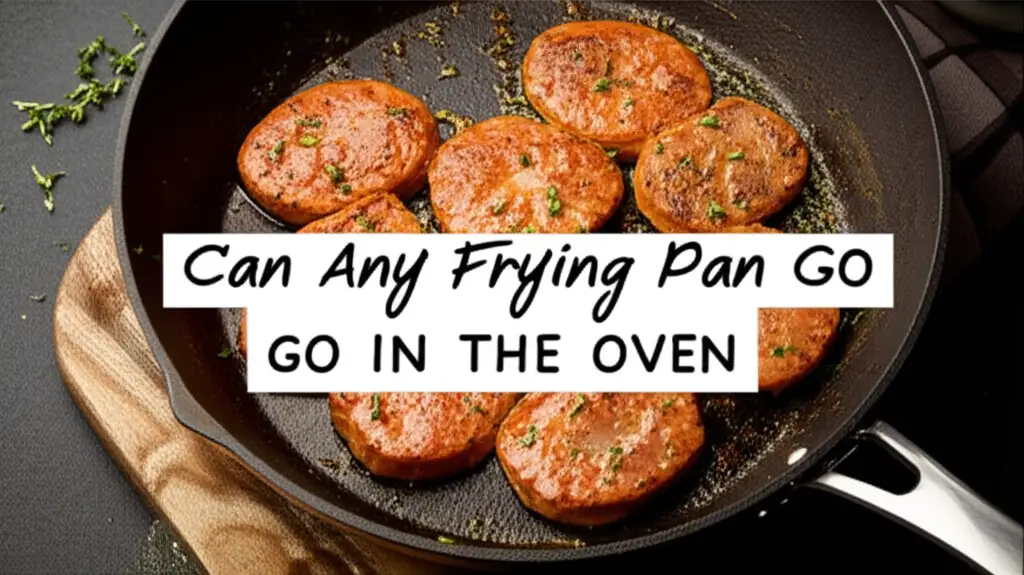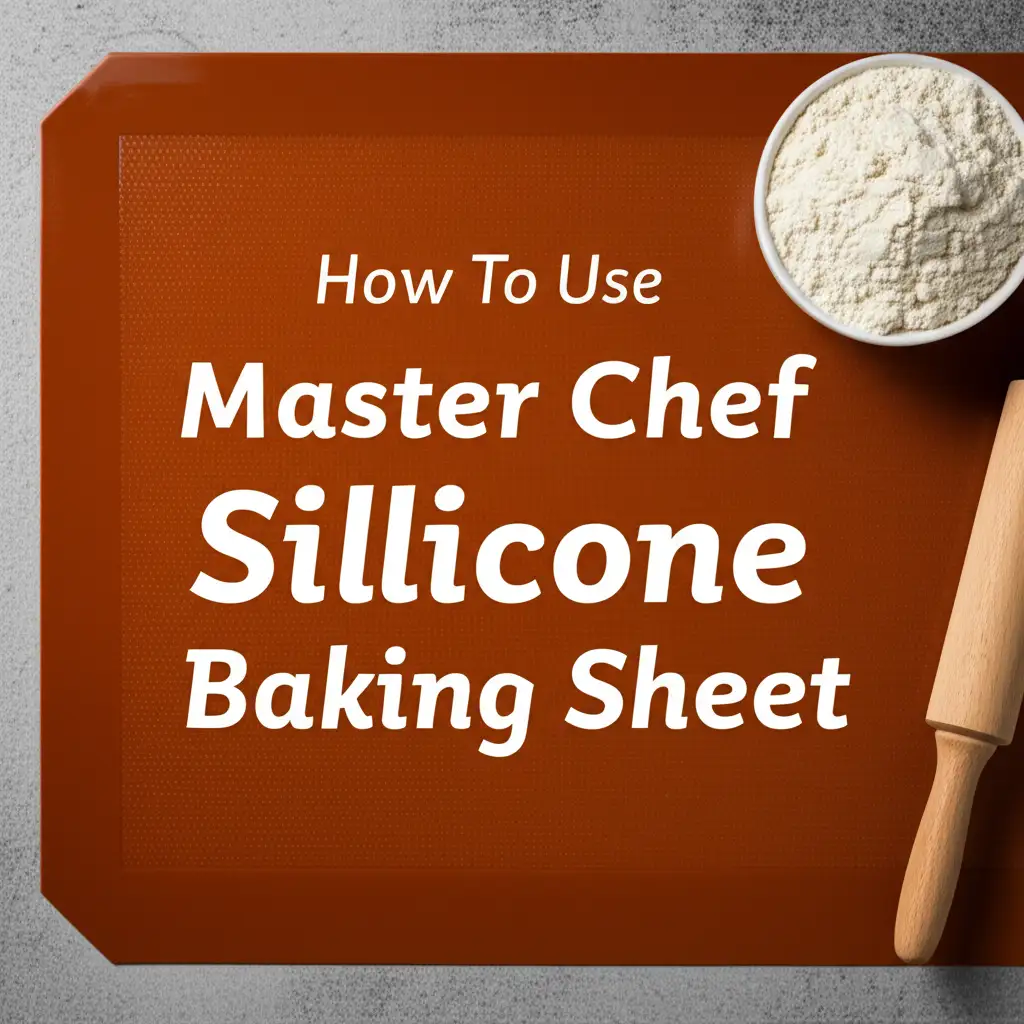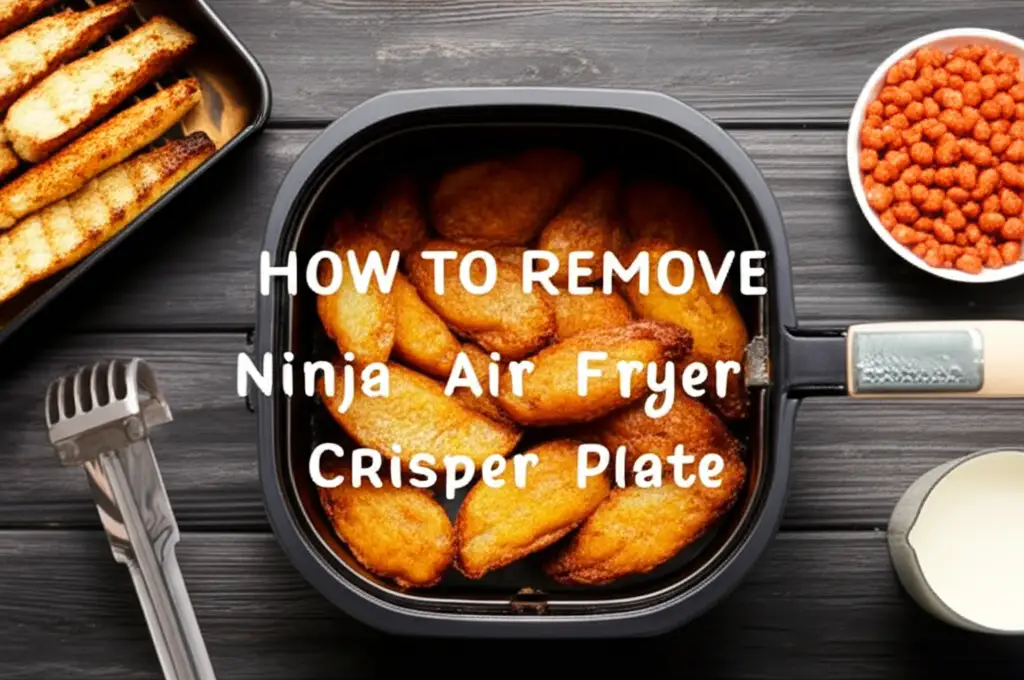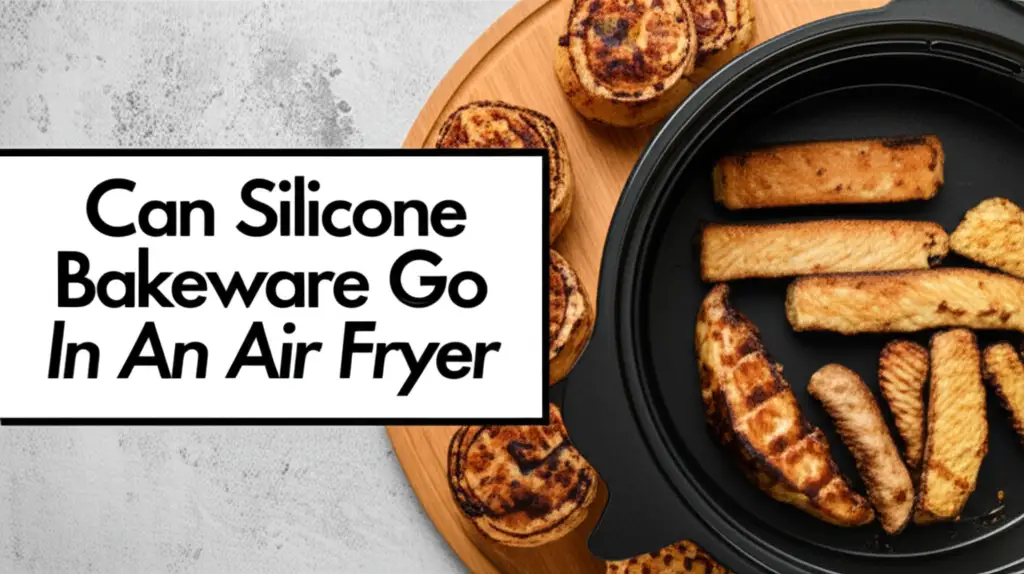· Katria Melrose · Kitchen Essentials · 14 min read
Can I Use Stainless Steel Pan For Baking
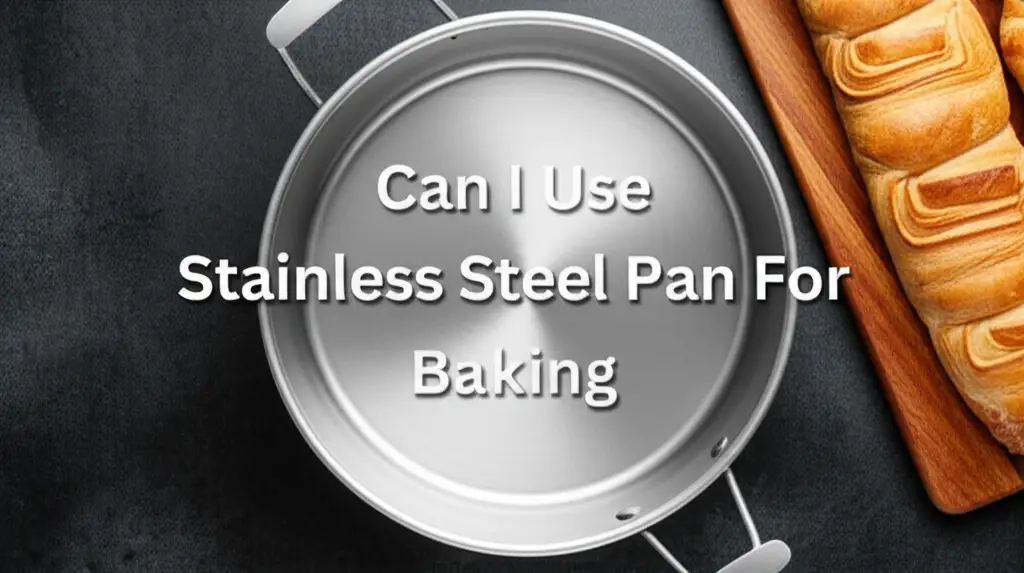
Baking with Stainless Steel Pans: A Comprehensive Guide
Have you ever looked at your shiny stainless steel pan and wondered if it could handle oven temperatures? It is a common question. Many home cooks use these pans daily on the stovetop. But their versatility extends beyond frying and sautéing. You might be curious if you can use a stainless steel pan for baking your favorite recipes. I certainly was when I first started exploring my kitchen tools.
This article explores how you can use stainless steel pans in the oven. We will cover their benefits and potential challenges. We will also share tips for successful baking outcomes. Get ready to transform your stainless steel cookware into a baking powerhouse. Let’s make your baking experiences even better.
Takeaway
- Most stainless steel pans are oven-safe.
- Check the pan’s handle material and maximum temperature.
- Preheat and grease your pan properly to prevent sticking.
- Stainless steel is excellent for roasting, casseroles, and some breads.
- Clean your pan promptly to maintain its shine.
Can I use stainless steel pan for baking? A clear answer.
Yes, you can use a stainless steel pan for baking. Most stainless steel cookware is designed to be oven-safe. Always check the manufacturer’s instructions. Ensure the pan’s handle materials can withstand oven temperatures. This makes stainless steel a versatile choice for many baking needs.
Understanding Stainless Steel for Oven Use
Stainless steel is a popular material in kitchens worldwide. It is known for its durability and resistance to corrosion. These properties make it suitable for various cooking methods. Many people associate stainless steel with stovetop cooking. However, its heat tolerance extends to the oven.
The composition of stainless steel allows it to withstand high temperatures. It is an alloy of iron, chromium, and sometimes nickel. Chromium provides the rust-resistant quality. This metal blend gives the pan strength and stability. It prevents warping under heat. When considering oven use, the pan’s construction matters. Solid stainless steel pans are generally safe for baking.
Some stainless steel pans have special features. They might have a core of aluminum or copper. This core helps with heat distribution. It can create more even baking results. Always verify that your specific pan is oven-safe. Look for a maximum temperature rating. This information is usually found on the pan’s packaging or manufacturer’s website. It ensures safe and effective use.
Understanding these characteristics helps you use your pans correctly. It also explains why stainless steel is a good choice for baking. You can explore more about oven safety for these pans. Discover if your stainless steel pan can go in the oven. This knowledge ensures your cooking is both safe and successful.
Advantages of Using Stainless Steel for Baking
Using stainless steel pans for baking offers several distinct advantages. Their robust nature makes them a reliable choice. Stainless steel cookware is known for its exceptional durability. These pans resist dents, scratches, and rust. This means they can withstand frequent use and high oven temperatures. They last for many years with proper care. This makes them a cost-effective investment for your kitchen.
Another key benefit is their non-reactivity. Stainless steel does not react with acidic foods. This is important when baking dishes with tomatoes, lemon juice, or vinegar. Other metals might leach into your food. Stainless steel keeps your food tasting pure. Your recipes will retain their intended flavors. This ensures a healthy and delicious outcome every time you bake.
Stainless steel pans offer great versatility. You can start a dish on the stovetop and finish it in the oven. This is perfect for recipes like frittatas or roasts. They transition seamlessly from one cooking method to another. Their sleek design also makes them attractive serving dishes. You can take them straight from the oven to the table. This reduces the number of dishes you need to wash. This versatility adds convenience to your cooking routine.
Finally, cleaning stainless steel is straightforward. Most stainless steel pans are dishwasher safe. This simplifies cleanup after baking. Even baked-on messes usually come off with a good soak. You can learn how to clean your stainless steel pan in the dishwasher. These advantages highlight why stainless steel is a smart choice for your baking adventures.
Challenges and Considerations When Baking with Stainless Steel
While stainless steel pans are great for baking, they do present some challenges. Understanding these can help you achieve better results. One common issue is food sticking to the surface. Stainless steel is not naturally non-stick. This means baked goods can adhere if the pan is not properly prepared. This can be frustrating when trying to remove your creations intact.
Uneven heat distribution can also be a concern. Stainless steel is a relatively poor conductor of heat on its own. This means hot spots can develop. Your food might bake unevenly. Some parts might cook faster or burn. This is less of an issue with tri-ply or multi-clad pans. These pans have an aluminum or copper core. The core helps spread heat more evenly. Always consider your pan’s construction.
Another point to remember is that stainless steel pans can lead to darker crusts. Their reflective surface and heat retention can brown food quickly. This is especially true for items touching the pan directly. If you are baking delicate cakes or light-colored breads, monitor them closely. You might need to adjust baking times or temperatures. This helps prevent over-browning.
Addressing stickiness is important for successful baking. Many home cooks face this challenge. If you are struggling with food sticking, there are solutions. Find out why everything sticks to stainless steel pans. Learning proper techniques will greatly improve your baking experience. Being aware of these points helps you adapt your baking methods. You can then use stainless steel pans effectively.
Preparing Your Stainless Steel Pan for Baking Success
Proper preparation is crucial when baking with stainless steel pans. This step minimizes sticking. It ensures your baked goods come out perfectly. My first few attempts without proper greasing were messy. I quickly learned the importance of this step.
Grease and Flour Your Pan
Always grease your stainless steel pan thoroughly. Use butter, shortening, or cooking spray. Make sure to cover the entire interior surface. This includes corners and sides. For cakes or breads, dusting with flour after greasing helps. The flour creates a barrier. It prevents the batter from sticking. You can also use cocoa powder for chocolate cakes.
Use Parchment Paper or Silicone Mats
For extra insurance against sticking, use parchment paper. Cut a piece to fit the bottom of your pan. You can also line the sides if needed. Parchment paper creates a complete non-stick surface. It also makes cleanup incredibly easy. Silicone baking mats, like Silpat, are another excellent option. These reusable mats provide a superior non-stick surface. They are ideal for cookies or roasted vegetables.
Preheat Your Pan (Optional for Some Recipes)
Some recipes benefit from preheating the stainless steel pan. This creates an initial hot surface. It can help achieve a good sear on roasted vegetables. It also ensures consistent baking temperatures. For most baked goods like cakes or casseroles, preheating the empty pan is not necessary. The pan will heat up with the oven. Preheating helps manage sticking for certain foods. You can discover how to get your stainless steel pan to not stick. This will guide you in various cooking situations.
Adjust Baking Temperatures and Times
Due to stainless steel’s heat retention, you might need slight adjustments. Foods can brown faster on the bottom. Consider lowering the oven temperature by 25°F. You might also reduce the baking time slightly. Always keep an eye on your food. Use a toothpick test for cakes. Rely on internal temperature for meats. These preparation steps make baking with stainless steel a rewarding experience.
Best Baked Goods for Stainless Steel Pans
Stainless steel pans truly shine for specific types of baked goods. Their robust nature handles a range of oven recipes well. I often reach for mine when I want a crispy bottom or even browning.
Roasted Vegetables and Meats
Stainless steel is excellent for roasting. Vegetables like potatoes, carrots, and broccoli crisp up beautifully. Meats like chicken pieces or pork chops also roast well. The pan’s ability to withstand high heat is beneficial. It helps develop a flavorful crust. You can achieve restaurant-quality browning. Simply toss your ingredients with oil and seasonings. Then spread them in a single layer in your pan.
Casseroles and Gratins
These pans are perfect for hearty, comforting dishes. Think of cheesy potato gratins or bubbling pasta bakes. The pan’s non-reactive surface is ideal for acidic ingredients often found in casseroles. It ensures your dish tastes as intended. The pan also transitions well from stovetop browning to oven baking. This makes it a one-pan solution for many recipes. I appreciate not having to transfer ingredients.
Certain Breads and Savory Bakes
While not ideal for delicate cakes, stainless steel works for some breads. Artisan loaves with a rustic crust can bake well. Savory bakes like cornbread or focaccia also do nicely. The pan provides good heat transfer for a solid crust. For denser doughs, it gives excellent structural support. Make sure to use enough grease or parchment paper. This prevents sticking on the bottom.
Sheet Pan Dinners
Sheet pan dinners are popular for their simplicity. Stainless steel roasters or larger pans are perfect for this. You can combine proteins and vegetables on one pan. Bake them together for a complete meal. The sturdy construction of stainless steel handles the weight. It also ensures even cooking of all ingredients. This makes cleanup easy too. Using stainless steel for these items guarantees good results.
When to Opt for Other Baking Materials
While stainless steel pans are versatile, they are not always the best choice. Some baked goods perform better in different materials. Knowing when to switch can save you from baking disappointments. I learned this the hard way with my first delicate cake.
Delicate Cakes and Pastries
Stainless steel can produce a very dark crust. This is due to its heat retention properties. For delicate cakes, like angel food cake or sponge cake, this is not ideal. These cakes need even, gentle heat. They require a light, golden crust. Non-stick aluminum or glass pans are often better for these. They provide a more consistent and gentler bake. They prevent excessive browning on the outside.
Cookies and Delicate Baked Goods
Baking cookies on stainless steel can be tricky. The direct contact with the hot metal can cause bottoms to brown too quickly. This can lead to burnt edges and raw centers. Cookie sheets made of aluminum or those with a non-stick coating work better. They distribute heat more evenly. They also prevent excessive browning. Silicone baking mats on any pan also improve cookie baking. They offer a cushioned, even heat for delicate items.
High-Sugar Recipes
Recipes with high sugar content can be problematic in stainless steel. Sugar caramelizes and burns easily. A direct metal surface can exacerbate this. For items like fruit tarts with sugary fillings, or sticky buns, use a different material. Glass or ceramic bakeware are often better. They provide a gentler heat. A heavy-duty, light-colored aluminum pan is also a good option. It prevents the sugar from scorching.
Understanding these limitations helps you choose the right pan for the job. Matching the pan material to the recipe ensures the best possible baking results. It helps you avoid common baking pitfalls. Always consider the specific needs of your recipe.
Maintaining Your Stainless Steel Pan After Baking
Proper maintenance extends the life of your stainless steel pans. It also keeps them looking new. Cleaning after baking is often easier than you think. Immediate action prevents stubborn stains.
Prompt Cleaning
Allow the pan to cool down completely after baking. Do not immerse a hot pan in cold water. This can cause warping. Once cool, wash it with warm, soapy water. Use a soft sponge or cloth. This removes most food residue. For baked-on bits, a soak can help. Fill the pan with warm, soapy water. Let it sit for 15-30 minutes. This loosens stuck food.
Dealing with Stubborn Residue
Sometimes, food still sticks after soaking. Do not use harsh abrasives or steel wool. These can scratch the surface. Instead, use a non-abrasive scrubber. For particularly tough spots, baking soda is effective. Make a paste with baking soda and a little water. Apply it to the residue. Let it sit for a few minutes. Then scrub gently. Baking soda is a natural cleaner. It helps lift baked-on food without damage. Learn how to clean your stainless steel pan with baking soda. This method is gentle yet powerful.
Removing Discoloration
High heat baking can sometimes cause discoloration. A bluish or rainbow tint might appear. This is normal and harmless. It is called “heat tint” or “bluing.” You can remove it with a mild acid. White vinegar works well. Pour a small amount of vinegar into the pan. Let it sit for a few minutes. Then wipe it clean. A commercial stainless steel cleaner also works. Always rinse thoroughly after cleaning.
Drying and Storage
Always dry your stainless steel pan completely after washing. Water spots can form if left to air dry. A clean towel works best. Store your pans in a dry place. Stacking them can save space. Use pan protectors or paper towels between stacked pans. This prevents scratches. Following these steps keeps your stainless steel pans in top condition. They will be ready for your next baking adventure.
FAQ Section
Are all stainless steel pans safe for oven use?
No, not all stainless steel pans are oven-safe. Most solid stainless steel pans are fine. However, you must check the handle material. Plastic or wooden handles are not oven-safe. They can melt or burn. Always look for a maximum oven temperature rating. This rating is usually on the pan’s bottom or the manufacturer’s website.
Do stainless steel pans need to be greased for baking?
Yes, stainless steel pans absolutely need to be greased for baking. Stainless steel is not naturally non-stick. Applying butter, shortening, or cooking spray is essential. For cakes and breads, dusting with flour after greasing provides an extra non-stick layer. This prevents food from sticking and ensures easy release.
Why does food stick to my stainless steel pan when baking?
Food sticks to stainless steel pans during baking due to several factors. The main reason is the lack of a non-stick coating. Insufficient preheating or improper greasing also contribute. Food particles bond to the hot metal surface. Using enough fat and sometimes parchment paper or silicone mats can prevent sticking.
How do I clean a stainless steel pan after baking?
After baking, let your stainless steel pan cool completely. Then, wash it with warm, soapy water and a soft sponge. For baked-on food, soak the pan in hot, soapy water for a while. You can also use a paste of baking soda and water for stubborn residue. Always rinse well and dry completely.
What temperature can stainless steel pans withstand in the oven?
Most stainless steel pans can withstand oven temperatures up to 500°F (260°C). Some high-quality or professional-grade pans might handle even higher temperatures. The specific limit depends on the pan’s construction and handle materials. Always check the manufacturer’s guidelines for your specific pan.
Can I bake cakes in a stainless steel pan?
You can bake certain cakes in a stainless steel pan, especially denser cakes like cornbread or some quick breads. However, stainless steel can cause darker, crispier crusts. For delicate cakes like sponge cake, aluminum or glass pans are often preferred. Always grease and flour the pan thoroughly for cakes.
Conclusion
You can confidently use a stainless steel pan for baking many of your favorite dishes. These pans offer great durability and versatility. They are excellent for roasting vegetables, meats, and baking casseroles. Remember to check if your specific pan is oven-safe. Look for any temperature limits, especially concerning handle materials.
To ensure successful baking, always prepare your stainless steel pan properly. Thorough greasing is key. Consider using parchment paper or silicone mats to prevent sticking. While they excel in many baking tasks, they might not be ideal for delicate cakes or cookies that require a very light crust. By understanding their strengths and weaknesses, you can use your stainless steel pans effectively. This makes your kitchen adventures even more rewarding. Now, go bake something wonderful!


